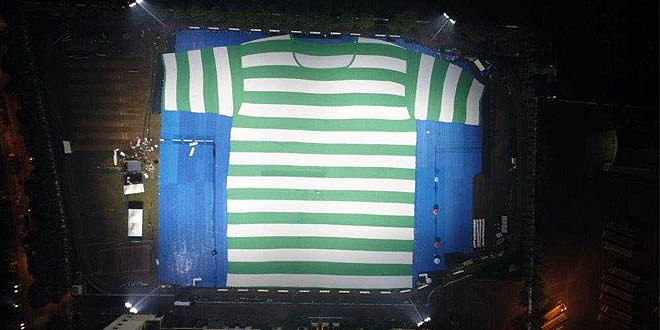The apex body of the plastics industry in India, Plastindia Foundation took up this initiative to build awareness and educate the masses on the need to manage plastics waste so that it is recycled more efficiently. Swapnil Dangirikar, the official adjudicator of Guinness World Records confirmed that this T-Shirt is bigger than the current record holder T-Shirt which is (93.2metres height x 62.73 metres width). Among those witnessed this record creation effort was Afroz Shah, the renowned environment lover and also the person behind world’s biggest beach cleaning exercise at Versova beach in Mumbai. The fabric from this T-Shirt will be later used to create 10,000 T-Shirts and distributed free among the children from economically weaker sections.
Atul Kanuga, Chairman, Environment and Plastics Image Committee, Plastindia Foundation mentioned that logic behind this initiative is to catch citizens’ attention on facts such as the dire need for everyone among us to be more responsible towards the environment, plastics waste can be managed effectively with understanding segregation at source and making citizens more conscious towards littering and mixing waste. Every bottle thrown responsibly can bring about not only an environmental change but also a social change. The Classic example is the World’s – “largest Tshirt, built from 200,000 discarded bottles of packaged drinking water which were crushed, recycled, processed into fibre and then converted into 4000 kilogrammes of Cloth.
The effort which took 45 days for a team of 15 skilled tailors from International Knitwear Company along with 60 casual labours was stitched over two phases partly in Tirupur and then in Bhiwandi, a town near Mumbai in a 100,000 sq feet ware house. It was finally displayed at Goregaon Sports Club, Mumbai where a cricket ground was covered from end to end to lay the T-shirt on the ground. The Large T-shirt took 3 days and more than 120 people to lay the 2600 kilogramme T-shirt to be laid down for display. The Adjudicator from Guinness used an external surveyor to measure the whole T-shirt using precision electronic instrument to get the exact measurements. The Unique disbelief that all including the adjudicator had was that a T-shirt of this size was actually a product made of discarded waste which felt nothing but like any other cloth.







